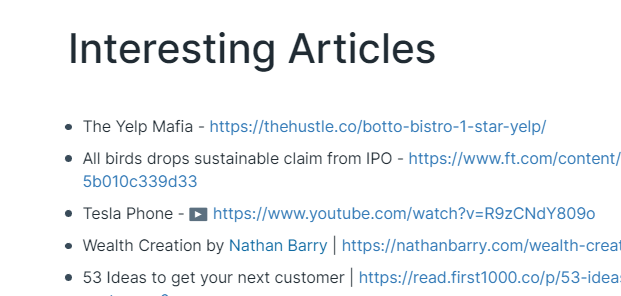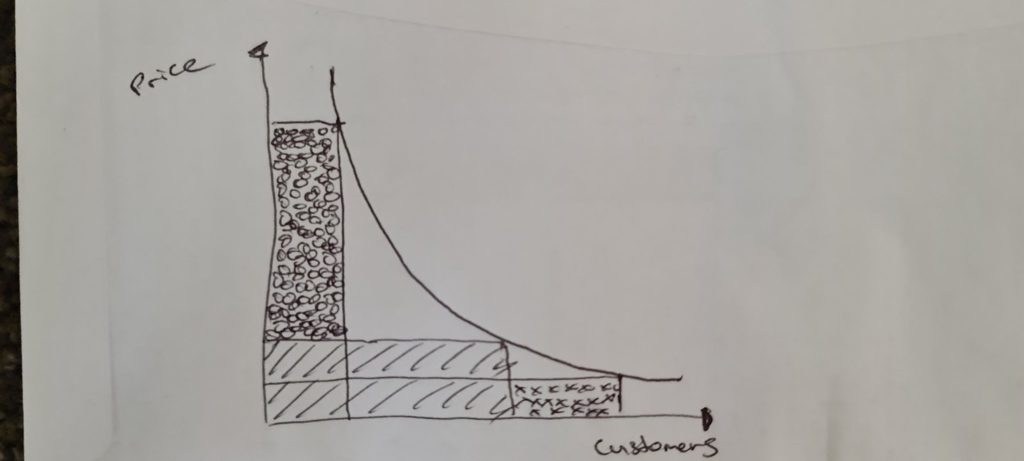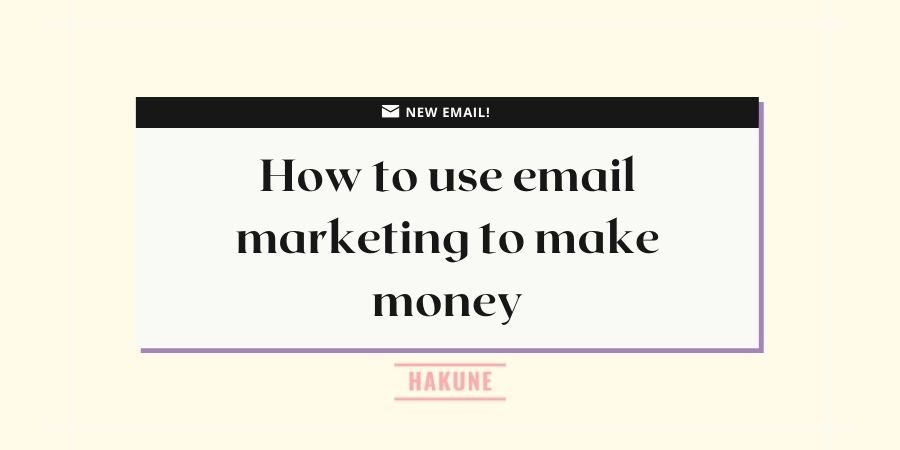The Method Episode #23

Email Marketing Works When You Write Something People Want To Read
80% of businesses do email marketing, and most do it wrong – well, kind of.
We know that generally, the best way to get something from someone is to give first, and email marketing is no different.
Lots of businesses make the mistake of going straight for the sale, or waffling about themselves in their emails, hoping to make a sale.
Instead, you’ll get way better long-term results from your email marketing if you regularly give value, say weekly and occasionally include an ask.
Here’s how to create and produce a weekly email newsletter that works.
1. Create and stick to a simple format.
2. Curate content
3. Write the email
4. Schedule and send regularly
Simple Format
Break your newsletter down into sections and define your sections by topic. For example, we use method, framework, and mental model in this newsletter.

Others use weird number acronyms like 3,1,4
3x photo’s
1x article
4x quotes
Once you’ve created your format, stick with it. It reduces the number of decisions you have to make when writing it and allows your readers to get familiar with and easily digest what you’re providing.
Current Content
Then you need to curate content to talk about. Do this as you go about your week.
Save articles you find interesting in a bookmarks folder in your web browser. Or screenshot photo’s from Instagram you like on your phone. Or take notes about stuff you want to mention as you think of it in google notes.

You don’t have to write original stuff like we do. Just share what your audience might find valuable. Such as relevant industry news, memes or notes from a book you’ve been reading.
Create and Send
Now create a pre-canned email in Gmail or use an email service provider like Mailchimp or Convertkit. Then create a template that matches your newsletter format mentioned above.

All we do is replicate the campaign/newsletter from the previous week and update the content.
So when it comes to writing your newsletter each week, all you have to do is cut and paste all the stuff you’ve curated into your pre-created template and send it to your audience.
The most daunting and difficult part of creating a regular newsletter is that moment when you sit down to write it and stare at a blank screen with no idea what to write. The hard part is already done by using a fixed format and curating your content as you go about your week.

Have More Fun And Make More Money By Decreasing Complexity
You can either grow your business by increasing complexity or decreasing complexity.
Growing by increasing complexity means more revenue, products, staff, systems, etc.
Growing by decreasing complexity is the opposite – less staff, fewer products, revenue etc.
The former looks impressive and gets a lot of press, the latter is impressive, but people will think you’re crazy.
For the business owner – you. Increasing complexity adds more problems, more headaches and more work hours. Assuming you’re not trying to create the next Apple, this isn’t the smart move.
Most of us are better off optimising for what feels good rather than what looks good.
Yesterday I watched a Sam Ovens video where he illustrates this point.
Pre-pandemic consulting.com (Sams company) was doing ~$35 Mil in revenue, ~$3 Mil in profit with a headcount of 50. More importantly, Sam was pulling long hours, hating his work and feeling burnt out.
Post-pandemic consulting.com is doing $6 mil in revenue, and $4 mil in profit with a headcount of 6. And more importantly, Sam is loving his work and life again.
I’m starting to run into this problem at my gym. In 18 months, we’ve increased our headcount by ~10 (full-time, part-time and contractors) and revenue by 100%, and complexity by ~5x, but we’ve only marginally increased our profit.
Here’s why this happens and how you can avoid it.
I call it climbing curve versus chasing the tail. Which I’ll eloquently demonstrate here with my back of the envelope graph.

^ The area shaded in beneath the curve represents value captured or total revenue. Mathematically speaking customers x price = revenue.
See what most of us do when we increase revenue is sell more to more customers at lower prices than our competitors. Which increases revenue but with a flat or declining profit margin.
And the result is like mentioned above, more SKU’s, more staff, more jobs to do, generally more problems for not much more profit. I call this chasing the tail (the x’s in the graph above)
Instead, like Sam has done (as explained in this video), we’re better off climbing the curve (o’s on the graph above). By selling fewer products to fewer customers at way higher prices. Which may decrease revenue but will significantly increase your profit margins and reduce complexity.
This old rule in business says 10% of your customers are willing to spend 10x more and extended further; 1% of your customers are eager to spend 100x with you.
You’ll find that those 10x customers require the same or less energy, resources, and time to sell to and serve as your 1x customers and make you lots more money.
So the takeaway is: If you want to enjoy building your business while making more money – raise prices and sell higher ticket/higher value stuff to less customers at way higher profit margins. Climb the curve, don’t chase the tail.
“To get big things done, let small bad things happen.”
~ Tim Ferriss
Where We’re Learning
• High Output Management Summary-> High Output Management is widely regarded as the best management book ever written. You can find all the key points of the book summarised here.
• Annual Review Template -> Great template to follow if you’re new to annual or quarterly reviews.

Naive Realism: Why We Get Stuck
You’ve changed, or they’ve changed is a silly phrase we use to critique people because they’re not who they used to be – Like that’s a bad thing.
Even though the surest way to stay where we are and not get what we want out of life is by being stuck in our ways. As a society, we seem to be scared of people who change.
You can’t move forward if you don’t progress right. So you’ve changed might be something we should desire, not hate on.
The stuck in their ways folk likely suffer from something called naive realism. It’s a human cognition bias that negatively affects how we think and make decisions. It’s a tendency to believe we see the world with true objectively.
The closer we get to complete naive realism, the more we assume that people who disagree with us are ignorant, uninformed, biased, or stupid.
The stronger our attachment to naive realism is, the less we are open to other’s ideas or different ways of thinking. This is exactly how we get stuck in our tracks and stuck with our ideas.
We hate on others for changing, which is generally a shift away from the way we think and behave, so we don’t change and get stuck.
The good news is naive realism is a sliding scale we can move up and down, not a fixed position. We can fight back and push away from complete naivety by surrounding ourselves with people who think differently and challenge us.
A common trait of highly successful people is they are comfortable with being wrong. As being wrong takes you closer to the truth.


